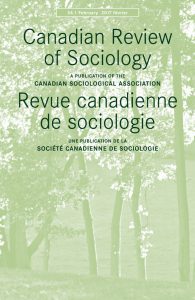Investigating misogyny on Twitter: sociology’s role.
There are now free tools available, such as Node XL, which, at unprecedented speeds and scales allow us access, harvest, and analyse the traces of people’s (often transgressive) thoughts, opinions and behaviours on Twitter. Since it combines the grand scale and generalisability of methods such as national surveys with the granularity and detail of close textual analysis, ethnography, or participant observation (Driscoll & Walker, 2014, p1746), Twitter analysis seemingly represents the holy grail of research methods. Existing research into misogyny on Twitter for example shows feminism is as indispensable as ever. There is, however, an increasingly important role for sociology to address technologically mediated symbolic violence like this.
Firstly, it is important sociology is leading potential critiques of such “big social data” (Manovich, 2011). A closer examination reveals many of the techniques used to sample and analyse Twitter data are limited or flawed. Twitter use is unevenly distributed among Web users in general and, even among those that use it, a significant percentage rarely send a tweet of their own, preferring instead to “listen” to the tweets of others (Graham, Hale, & Gaffney, 2014). There’s no reliable method for verifying the location of Tweeters. For example, from a sample of 19.6 million tweets collected by Graham et al. (2014) only 0.7 percent of tweets contained structured reliable geolocation information (p4). Since they are invisible to algorithms, Twitter’s intentionally nuanced cultural practices such as subtweets (tweets referencing an un-named but implicitly identifiable individual), quoting text via screen captures, “hate-linking” (linking to denounce rather than endorse) and, of course, irony, are ignored by automated methods of textual analysis (Tufekci, 2014). Much Twitter research is therefore completed with “only limited understandings of how best to work with the spatial and linguistic contexts in which the information was produced” (Graham et al. 2014, p1).
Secondly, it is crucial for sociology to show misogyny on Twitter can be fully understood only by placing it its full historical and social context. When it comes to our most important and challenging social problems like misogyny, Twitter analysis, at least in isolation, is a poor substitute for sophisticated ethnography accompanied by historically situated and theoretically reflective analysis. Proving, through sentiment analysis, how many people make misogynist statements on Twitter, who gets retweeted the most; who’s the most influence misogynist in a network of misogynists is all very well but how does this help us understand misogyny; its consequences and possible counter-measures?
When any of us use technology we individually and collectively engage with wider society; its political and social history and the struggles that have preceded our temporal space. Via religious, legal, and medical discourses, the antecedents of misogyny are deeply and subtly embedded in our collective conscience. In research, misogyny on Twitter should be addressed as technologically mediated symbolic violence that arguably reengages modern patriarchy with centuries of discursive action intended to humiliate feminist voices.
Driscoll, K., & Walker, S. (2014). Working Within a Black Box : Transparency in the Collection and Production of Big Twitter Data, 8, 1745–1764.
Graham, M., Hale, S. a., & Gaffney, D. (2014). Where in the World Are You? Geolocation and Language Identification in Twitter. The Professional Geographer, (July), 1–11. doi:10.1080/00330124.2014.907699
Manovich L (2011) Trending: The promises and the challenges of big social data. Debates in the Digital Humanities: 1–17.
Tufekci, Z. (2014). Big Questions for Social Media Big Data : Representativeness , Validity and Other Methodological Pitfalls Pre-print.




1520-6688/asset/Capture.jpg?v=1&s=b5076c49a7d1c5f1b9cf0dd9cd292394a3be81cc)
